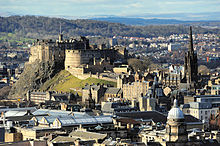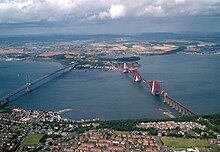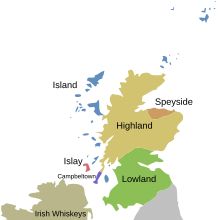







Scotland is a well-developed tourist destination, with tourism generally being responsible for sustaining 200,000 jobs mainly in the service sector, with tourist spending averaging at £4bn per year.[1] In 2013, for example, UK visitors made 18.5 million visits to Scotland, staying 64.5 million nights and spending £3.7bn. In contrast, overseas residents made 1.58 million visits to Scotland, staying 15 million nights and spending £806m. In terms of overseas visitors, those from the United States made up 24% of visits to Scotland, with the United States being the largest source of overseas visitors, and Germany (9%), France (8%), Canada (7%) and Australia (6%), following behind.[2]
Scotland is generally seen as a destination with beautiful scenery combined with thousands of historic sites and attractions.[3] These include prehistoric stone circles, standing stones and burial chambers, and various Bronze Age, Iron Age and Stone Age remains. There are many historic castles, houses, and battlegrounds, ruins and museums. Many people are drawn by the culture of Scotland.
The main tourist season is generally from April to October. In addition to these factors, the national tourist agency, VisitScotland, have deployed a strategy of niche marketing, aimed at exploiting, amongst other things, Scotland's strengths in golf, fishing and food and drink tourism.
- ^ "Tourism". The Scottish Government. Archived from the original on 2008-07-08. Retrieved 2006-01-10.
- ^ "Visit Britain: Insights and Statistics". Archived from the original on 2005-12-03.
- ^ "Scotland | ALBA". VisitScotland.
